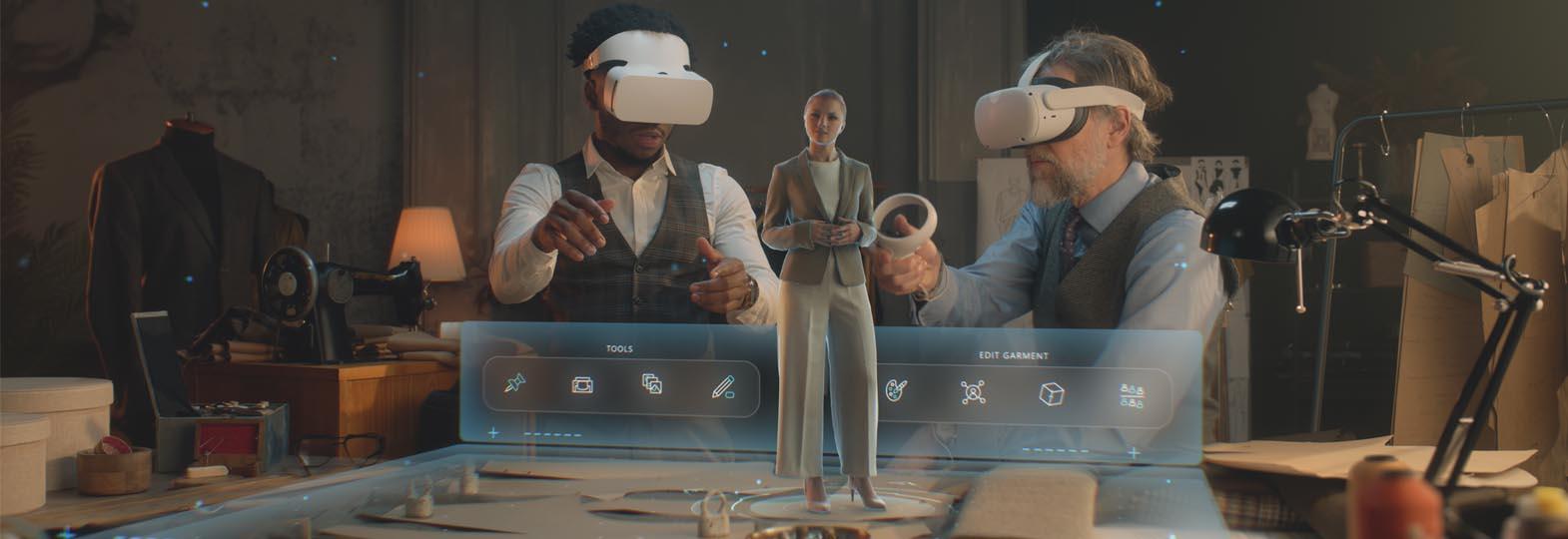Technological innovations have reshaped many industries, including fashion, over the past several years. According to a report from McKinsey, fashion companies invested 1.6 to 1.8 per cent of their revenue in technology in 2021, and this number expected to rise to somewhere between 3 to 3.5 per cent by 2030.1
The fashion industry is known for innovation, particularly in retail and manufacturing technology. However, two advancements—3D design and AR (augmented reality) technology—have the potential to revolutionise the entire apparel production process by making it faster, more efficient, and more sustainable. These tools are transforming the industry, allowing for a more streamlined design and production process, as well as better sell-in and sell-through experiences for buyers and consumers.
3D & AR Improve Production
Traditional 2D apparel design is a time-consuming and costly process, involving multiple physical prototypes and iterations while also resulting in wasted materials. However, with 3D technology, designers can create and ideate digitally, creating virtual versions of their designs that can be viewed virtually as though a product sample is in the room. This allows product design team members to see how a garment will look and fit before it is produced, allowing for faster iteration and decision-making, while also improving collaboration across teams and vendors. This saves time, money and materials that the traditional design process would otherwise consume.
3D design technology also enables designers to make changes to their designs quickly and easily, without waiting for new materials to arrive or for physical prototypes to be manufactured. This means that designers can experiment with different fabrics, colours and textures and make changes to the design in real time before it goes into production. It can even help some brands to garner buyer feedback before finalising a product and taking it to production, ensuring that the most sought-after product is the one that enters the marketplace from the get-go.
Technology Changes the Purchasing Experience
AR technology is set to revolutionise how apparel is marketed and sold to B2B and B2C customers. With 3D and AR technology, designers and wholesalers can digitally showcase a product or product catalogue to prospective buyers and resellers, eliminating the need for product samples, onsite meetings and travel, while shortening the overall consideration and selling process.
Further down the product supply chain, 3D and AR tech enables customers to try on clothes, shoes and accessories virtually, using their smartphones or other devices. Though in its earlier stages, this accommodates ever-growing e-commerce sales, which hit a record high of $299.12 billion in Q4 of 2022.2 This means that customers can see how a product will look and/or fit before they make a purchase, bringing the in-person experience online and, in addition to enhancing the shopping experience, helping reduce the need for returns and exchanges. It also can streamline manufacturing, allowing retailers to understand customer intent better and how many items for each SKU (stock keeping unit) should be produced for sale.
Impact on the Industry
The fashion industry is poised for massive disruption with the widespread adoption of 3D and AR. These technologies can lower the industry’s environmental impact and improve the bottom line by making the production process faster, more efficient, and more sustainable.
In addition, 3D and AR integration presents an opportunity to provide buyers and their customers with personalisation and customisation, enabling brands to develop garments, shoes and accessories that best suit their customers’ style preferences. Long-term, this helps brands decrease the cost of development while promoting the bottom line, boosting customer loyalty and sales. The use of 3D in e-commerce has proven to double conversion rate, increase average cart size and reduce returns by 40 per cent. In a rapidly evolving industry, 3D and AR technology are the best way to innovate and stay competitive in today’s market.


 (1)20240730094415.jpg)







Comments